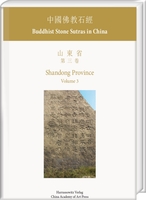|
|
more titles of the subject:
Download:
The third volume of the five-volume series on Buddhist stone sutras in Shandong presents inscriptions on all mountains in Shandong other than those near Lake Dongping (volume 1) and the city of Zoucheng (volume 2), with the exception of Taishan (to be covered in volume 4). The northernmost entry in this volume is a lost inscription (ca. 526) once situated among the sculptures at Yellow Stone Cliff, south of Jinan. Zheng Yan analyzes the art historical significance of this site. Inscriptions under the open sky occur elsewhere at Mount Culai (dated 570), Mount Fenghuang (ca. 563 and 921), Mount Shuiniu (ca. 560), Mount Tao (second half, 6th c.), and Mount Long (second half, 6th c.), this last site discovered only in 2008. Lost inscriptions on Mounts Jian (dated 575), Yang (second half, 6th c.), and Ziyang (second half, 6th c.; here identified for the first time) have been reconstructed based on extant rubbings, epigraphic literature, and archaeological evidence. While “Perfection of Wisdom” now emerges as the key doctrinal concept in the Shandong mountains, the names of Buddhas, of which “Buddha King of Great Emptiness” is especially conspicuous, engender visions of cosmic time and space.
All engravings are fully documented with photographs and rubbings; they are transcribed, translated into English, and analyzed. This research has been conducted under the auspices of the Heidelberger Akademie der Wissenschaften by an international team led by Lothar Ledderose and supported by the cultural authorities in China. The volumes, bilingual in Chinese and English, address a wide audience. |




